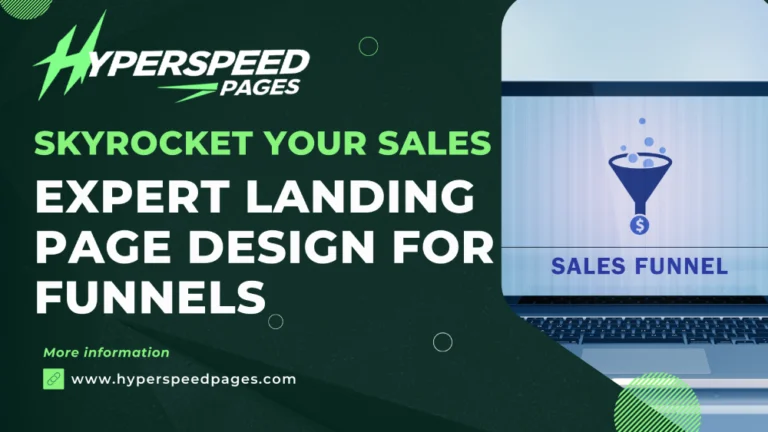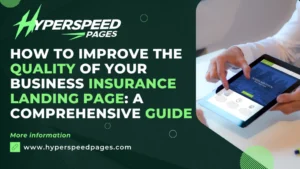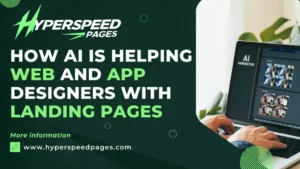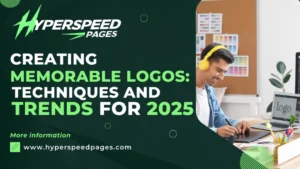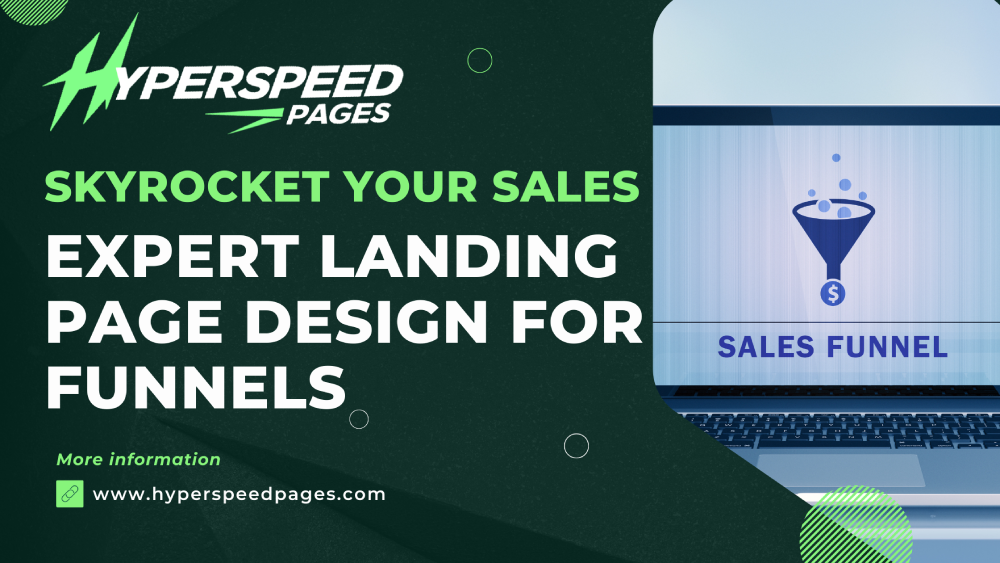
When designing a landing page for sales funnel-specific projects, there are several expert strategies and technical considerations to take into account.
A sales funnel is a critical aspect of any landing page strategy, and the landing page serves as one of the most crucial touchpoints for converting potential customers into leads or paying clients.
To ensure success, a landing page must be not only visually appealing but also strategically designed to optimize each stage of the funnel.
What is the Role of a Landing Page in the Sales Funnel?
It is crucial to understand the pivotal role a sales funnel landing page plays in the sales funnel. A sales funnel typically consists of the following stages:
- Awareness: This is where the customer becomes aware of your brand or product. The landing page should focus on introducing your value proposition and addressing common pain points.
- Interest: Here, the customer is intrigued and seeks more information. The landing page should provide detailed product or service information, testimonials, and case studies.
- Desire: The customer is convinced of the value and wants to learn more about the purchase process. The landing page should offer clear calls to action, pricing information, and guarantees.
- Action: The customer is ready to buy. The landing page should streamline the purchase process and provide reassurance.
The email capture landing page is where visitors from various marketing channels (e.g., ads, email campaigns, social media) are directed and where the initial phase of conversion happens. This makes the landing page a vital tool for nurturing leads, collecting data, and facilitating the smooth transition of prospects down the funnel.
1. Prioritize User Intent and Target the Right Audience
A fundamental element in sales funnel-specific landing page design is addressing user intent. The landing page should be tailored to the stage of the sales funnel your visitor is in and the type of action you want them to take.
For instance, the top-of-the-funnel (ToFu) audience is likely looking for information and education, so your landing page should focus on providing valuable resources like eBooks or guides. Conversely, for bottom-of-the-funnel (BoFu) users, the goal might be to offer a discount or special offer to finalize a purchase.
Practical Design Tip
- Customizable Content Blocks: Use flexible content blocks that can dynamically change based on the user’s journey or engagement level. This can be achieved through customer data platforms (CDPs) or tools like Google Optimize that allow you to display different messages to different audiences.
2. Craft Clear and Compelling Headlines
Your headline is one of the first things a visitor sees, and it plays a massive role in engaging users. A well-crafted headline should immediately communicate the benefit or value proposition of your offer. It must be attention-grabbing but also relevant to the visitor’s intent.
Technical Consideration
- A/B Testing for Headlines: Implement A/B testing to determine which headline resonates more with your target audience. Tools like Unbounce or Optimizely can be used to experiment with different headline variations, measuring key metrics like bounce rates and time on page.
Best Practice
- Keep it Action-Oriented: Actionable language that addresses a visitor’s pain points or goals typically performs better. Use direct and powerful verbs such as “Get”, “Download” or “Boost” to compel action.
3. Strong, Focused Call-to-Action (CTA)
Your call-to-action is the driving force of your landing page. Every sales funnel has a desired outcome, and your CTA needs to guide users toward that action with minimal friction. Whether it’s signing up for a free trial, downloading a whitepaper, or making a purchase, the CTA should be clear, concise, and placed strategically.
Technical Insight
- Heatmaps and Scroll Tracking: Tools like Hotjar or Crazy Egg can help analyze how visitors interact with your landing page. By using heatmaps and scroll tracking, you can identify the optimal placement for your CTA to ensure that it is visible and clickable.
Best Practice
- One Primary CTA: Focus on a single, prominent CTA to avoid confusing the user. Too many options can dilute the effectiveness of the page. If you must include secondary CTAs (like “Learn More”), ensure that they are subtle and do not compete for attention.
4. Simplified Navigation and Minimal Distractions
Landing pages designed for specific sales funnels should aim to minimize distractions and guide users toward the intended conversion goal. The most effective testimonial landing pages often eliminate navigation bars, sidebars, or excessive links that could pull the user’s attention away from the CTA.
Technical Consideration
- Use Lightweight CSS Frameworks: Frameworks like Tailwind CSS or Bootstrap can help maintain a clean and structured design, minimizing the need for heavy scripts that could slow down load times. Fast-loading pages lead to lower bounce rates, especially on mobile.
Best Practice
- Above-the-Fold Content: All essential elements (e.g., the headline, CTA, and supporting value proposition) should be placed above the fold so visitors can immediately see what they need to do without scrolling.
5. Leverage Visual Hierarchy and Design Principles
Visual hierarchy refers to the arrangement and prioritization of elements on your landing page in a way that naturally guides the visitor’s eye to the most important sections, such as the headline, offer, and CTA.
Technical Insight
- F-Pattern and Z-Pattern Layouts: Utilize F-pattern or Z-pattern layouts, which are common scanning behaviors for web users. These layouts strategically place important content along the paths where users’ eyes naturally flow.
Best Practice
- Consistent Color Palette: Use color psychology to emphasize key actions. For instance, a bright, contrasting color for the CTA button can draw attention. However, ensure the color palette aligns with your brand identity and doesn’t overwhelm the user.
6. Utilize Trust Indicators
Building trust is essential for moving prospects down the sales funnel. Incorporating social proof, trust badges, client testimonials, and case studies can significantly improve conversions by easing any doubts potential customers may have.
Technical Implementation
- Automated Review Integration: Use APIs or platforms like Trustpilot or Yotpo to automatically display updated reviews and testimonials. Real-time updates provide fresh, credible content that builds trust with new visitors.
Best Practice
- Case Study Highlight: If you’re targeting businesses, use well-designed, downloadable case studies as lead magnets. These can showcase your expertise and provide tangible results from previous clients.
7. Optimize for Mobile and Speed
Given the increasing number of users accessing landing pages via mobile devices, ensuring that your page is mobile-optimized is crucial. Google has adopted mobile-first indexing, meaning the mobile version of your site is used for indexing and ranking. Therefore, if your landing page isn’t mobile-friendly, it may lose valuable search engine visibility.
Technical Requirements
- Mobile-Friendly Design Tools: Use responsive design frameworks like Foundation or Tailwind CSS that adjust layouts automatically for different screen sizes. Optimize media files by compressing images using tools like TinyPNG and minimizing unnecessary JavaScript.
Best Practice
- AMP Pages: Accelerated Mobile Pages (AMP) technology allows landing pages to load almost instantly on mobile devices, which can significantly reduce bounce rates.
8. Data-Driven Optimization Using Analytics
Your landing page should not be a static element in your sales funnel. Continuously analyze its performance using tools like Google Analytics and HubSpot to track conversion rates, page load times, and user behavior.
Best Practice
- Conversion Rate Optimization (CRO): Implement ongoing CRO strategies by identifying high-exit points, high-bounce sections, or underperforming elements, and continuously optimize your landing page to improve user experience and conversions.
Data Analysis Tip
Behavior Flow Reports: Use Google Analytics’ Behavior Flow reports to see how users navigate your site after landing on your page. This insight helps refine funnel stages to minimize drop-offs.
9. Personalization and Dynamic Content
One of the most powerful techniques for boosting conversions in sales funnel-specific landing pages is personalization. When users feel like the page is tailored specifically for them, they are more likely to engage with the content and take action. This involves presenting dynamic content that changes based on user behavior, geographic location, or past interactions with your brand.
Technical Implementation
- Personalization Tools: Use personalization platforms like Optimizely, Dynamic Yield, or Adobe Target to dynamically modify content, images, and CTAs based on user segments. Integration with CRM systems can allow even more advanced personalization, offering relevant suggestions or content based on past interactions.
- Geolocation Data: By integrating IP geolocation services, you can display location-specific offers or language settings, creating a localized experience for users from different regions.
Best Practice
Behavior-Based Personalization: If a visitor has previously interacted with certain content on your site (e.g., a specific service page), show them related content on your landing page. For instance, a returning user interested in a pricing page could be served with a personalized discount offer.
10. Use of Video Content to Enhance Engagement
Video content is an increasingly popular tool for boosting engagement on landing pages, especially when it comes to complex sales funnels that require educating the user. Videos can quickly and efficiently convey a product’s value, explain how a service works, or present a compelling case study—all in a format that’s easier to consume than large blocks of text.
Technical Consideration
- Optimized Video Hosting: Use dedicated video hosting platforms like Wistia or Vimeo to ensure fast loading times and HD quality. These platforms also offer detailed video analytics, which allow you to track user engagement, such as where users drop off or which sections they rewatch.
- Mobile Optimization: Make sure videos are optimized for mobile playback. Avoid autoplay on mobile devices to prevent negative user experiences, especially in situations where users have limited data bandwidth.
Best Practice
- Explainer Videos: If your sales funnel involves complex products or services, an explainer video placed near the top of your landing page can break down difficult concepts. Make sure the video is concise, ideally 60-90 seconds, and ends with a clear CTA to guide the user to the next stage in the funnel.
11. Implement Exit-Intent Popups and Lead Magnets
Even with a perfectly designed digital marketing landing page, some visitors will hesitate to take the desired action. This is where exit-intent popups and lead magnets come into play. These features are triggered when a user attempts to leave the page, providing a final opportunity to capture their interest.
Technical Implementation
- Exit-Intent Technology: Tools like OptinMonster or Sumo track user behavior, detecting when a visitor is about to leave the page. These tools can then trigger a popup offering a last-minute incentive, such as a discount, a free trial, or a downloadable resource.
- Lead Magnet Integration: Create a valuable lead magnet (e.g., a whitepaper, checklist, or webinar) that targets the specific interests of users at different stages of the sales funnel. The exit-intent popup can present this lead magnet in exchange for the user’s email address, nurturing them further down the funnel through follow-up campaigns.
Best Practice
Non-Intrusive Design: Ensure that exit-intent popups are designed in a non-intrusive manner. Popups that are too aggressive can frustrate users and cause them to leave the site entirely. Consider using a polite tone and offering real value, such as exclusive content or limited-time offers.
These advanced tactics, combined with the previously discussed elements like CTA optimization, trust indicators, and data-driven analytics, create a holistic strategy for driving conversions and maximizing the impact of your sales funnels.
SOURCE:

